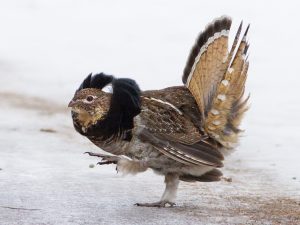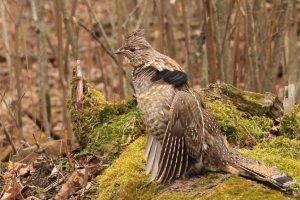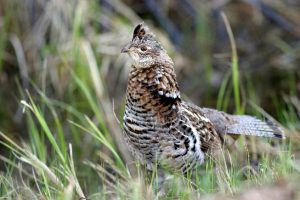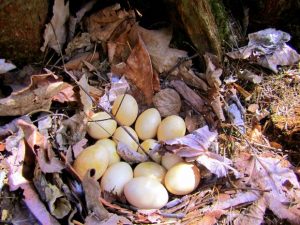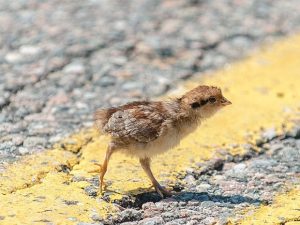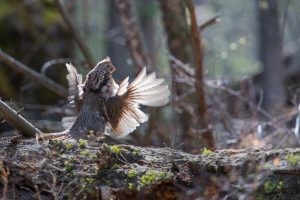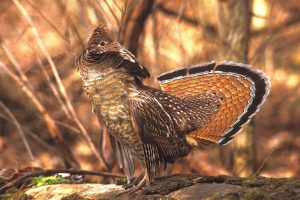Ruffed Grouse
The non-migratory bird has a beautiful look, due to its colorations and patterns on the body. It is widely hunted and that is a tradition at some parts of the world.
Scientific Classification
| Kingdom | Animalia |
| Phylum | Chordata |
| Class | Aves |
| Order | Galliformes |
| Family | Phasianidae |
| Genus | Bonasa |
| Scientific Name | Bonasaumbellus |
Quick Information
| Description | Size: 15.7-23.6 in (40-60 cm) Wingspan: 19-25.1 in (50-64 cm) Weight: 15.87-26.4 oz (450-750 g) Color: Two morphs visible, brown and grey; brown ones have a brown plumage, grey tail while grey birds have a grayish-brown head, back, and neck, the breast is lighter and the underside is white |
| Distribution | Appalachian Mountains of Alaska to Canada |
| Habitat | Deciduous and coniferous forests |
| Subspecies | 1. B. u. yukonensis 2. B. u. castanea 3. B. u. umbelloides 4. B. u. brunnescens 5. B. u. phaios 6. B. u. sabini 7. B. u. labradorensis 8. B. u. affinis 9. B. u. obscura 10. B. u. togata 11. B. u. mediana 12. B. u. incana 13. B. u. monticola 14. B. u. umbellus |
| Sounds & Calls | Females produce “pete-pete-petapeta” sounds while males’ calls are similar to “queet”. They both make a hiss-like sound |
| Lifespan | 7-11 years |
| Diet | Fruits, leaves, acorns, and insects |
| Adaptations | Their capability to digest high-cellulose foods help them survive in the chilly weather |
| Predators | Bobcat, fox, great-horned owl, goshawk, and fisher |
| IUCN Conservation Status | Least Concerned |
Behavior
- The bird stays mostly on the ground and takes a flight when surprised.
- They dig up burrows in the snow to stay warm.
- Ruffed grouses often emit a drumming sound through wing flapping while defending own territories.
- Usually solitary, but these birds often create groups to have foods together
Mating & Reproduction
The courtship starts with the male grouse looking for potential female partners through drumming a “thump thump” sound. After this, the female starts building bowl-shaped nests at the tree base or rock. Females lay cream white to cinnamon colored 9-14 eggs each sizing 1.5-1.6 in. They are incubated for 23-24 days.
Life-cycle
Young grouses have a cluster of black feathers in a triangular shape around their ears. Within 24 hours of hatching, they become capable of walking and feeding all by themselves.
Interesting Facts
- It is the state bird of Pennsylvania
- This bird is the only species of the genus Bonas
References:
- https://www.allaboutbirds.org/guide/Ruffed_Grouse/lifehistory
- https://www.audubon.org/field-guide/bird/ruffed-grouse
- https://ruffedgrousesociety.org/grouse-facts/#.XMAYF6RS_Dc
Published on May 10th 2019 by Sahana Kanjilal under Coniferous Forest Animals.
Article was last reviewed on 9th May 2023.


